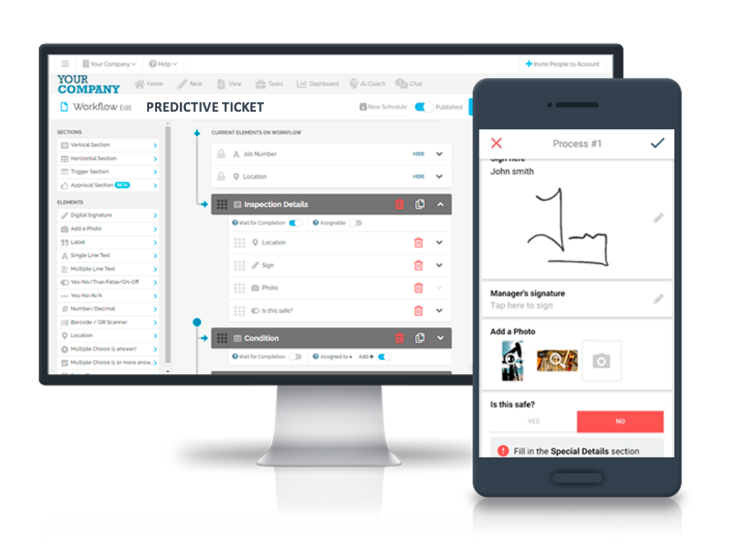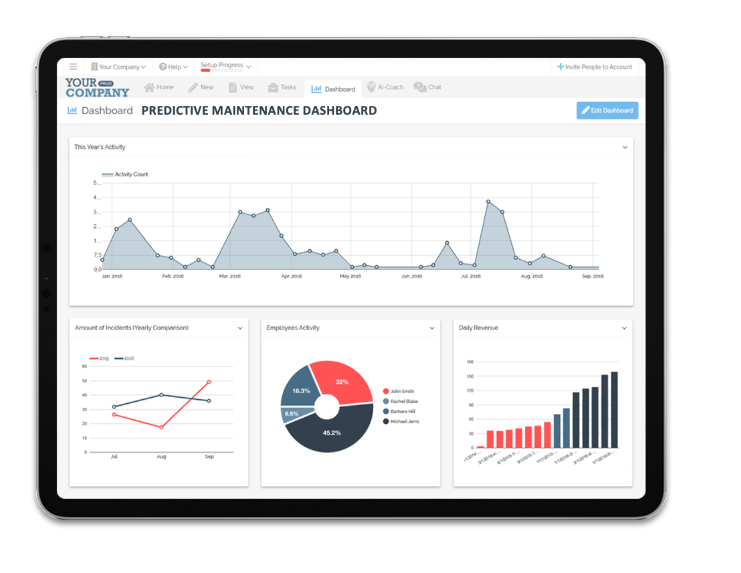Fleet managers are continually seeking ways to reduce downtime, extend vehicle lifespans, and optimize maintenance schedules. One revolutionary approach that has gained momentum towards this end is “Fleet Predictive Maintenance.”
This article takes an in-depth look at how companies can enhance fleet efficiency and reliability with proactive predictive maintenance solutions
What is Fleet Predictive Maintenance?

Fleet Predictive Maintenance is a proactive approach to managing and servicing a fleet of vehicles or machinery. It goes beyond the traditional, reactive maintenance methods and relies on data-driven insights to predict and prevent breakdowns, thereby maximizing the uptime of your assets.
By analyzing historical data, sensor information, and various performance metrics, Fleet Predictive Maintenance enables you to address maintenance issues before they become critical.
The Importance of Predictive Maintenance
Predictive maintenance is crucial for fleet operations. It helps businesses avoid unexpected breakdowns, reduce unplanned maintenance costs, and ensure their vehicles are in optimal working condition. It’s all about maximizing asset uptime and minimizing downtime.
Below are 5 benefits of Implementing Fleet Predictive Maintenance
- Cost Savings: Predictive maintenance reduces repair and replacement costs, as issues are addressed before they worsen.
- Enhanced Safety: Maintained vehicles are less likely to cause accidents due to mechanical failures.
- Increased Productivity: Reduced downtime means more vehicles on the road, resulting in increased productivity.
- Extended Vehicle Lifespan: Vehicles last longer when they receive timely maintenance.
- Better Resource Allocation: Maintenance is targeted, and resources are allocated more efficiently.
What Does a Predictive Maintenance System Include?
A robust predictive maintenance system includes:
- Data Sensors: These collect real-time data on vehicle performance. These can include IoT sensors, Machine Learning Algorithms, and Telematics Systems.
- Data Analysis Tools: To interpret and predict issues.
- Maintenance Planning: Scheduling maintenance at the right time.
- Feedback Loop: Continuous improvement based on data.
Data collection can include monitoring engine performance, tire wear, fuel consumption, and more. Advanced analytics software can predict when components are likely to fail, allowing for timely maintenance.
Key Technologies in Fleet Predictive Maintenance
Predictive maintenance is only possible with the right predictive maintenance tools.
1. IoT Sensors
Internet of Things sensors are installed in vehicles to monitor various parameters such as engine performance, tire pressure, and fuel efficiency. IoT devices provide real-time data that is analyzed to predict maintenance needs.

2. AI & Machine Learning Algorithms
AI-powered software analyzes data to forecast maintenance needs, while machine learning algorithms use historical data and sensor information to predict when a vehicle component is likely to fail. This helps in scheduling maintenance before the issue becomes critical.
3. Telematics Systems
Telematics systems combine GPS and vehicle diagnostics to collect data on vehicle location, driver behavior, and engine performance. This data is analyzed to optimize maintenance schedules and improve overall fleet efficiency.
4. Predictive Analytics Software
Predictive analytics software takes all the collected data and uses it to generate actionable insights. Fleet managers can use these insights to make informed decisions about maintenance.
Implementing Predictive Maintenance in Your Fleet

To implement predictive maintenance effectively, consider the following steps:
Step 1 – Data Gathering: Install sensors and data collection tools.
Start by installing IoT sensors and telematics systems to gather data from your vehicles. IoT Devices: Sensors and trackers provide real-time data.
Step 2 – Data Analysis: Utilize software for predictive analysis.
Use machine learning algorithms and predictive analytics software to analyze the data and identify maintenance patterns.
Step 3 – Maintenance Scheduling
Based on the analysis, schedule maintenance tasks when they are most needed, reducing vehicle downtime. You could plan maintenance during off-peak hours.
Step 4 – Continuous Improvement
Regularly review and refine your predictive maintenance strategy to improve its accuracy and effectiveness.
FAT FINGER: Your Solution for Efficient Fleet Management
Fleet management is a process usually fraught with challenges. These include:
- High initial costs: Implementing the system can be expensive.
- Data management challenges: Handling and analyzing vast amounts of data.
- Staff training requirements: Ensuring that your team is capable of operating the system.
FAT FINGER helps you overcome these challenges with its:
- Low cost of implementation
- Simple data management procedures
- Speed. Speed is of the essence in business, and given that FAT FINGER is an easy-to-use app, you can build and start using fleet management workflows in seconds without needing to spend hours learning the software.

Other benefits of using FAT FINGER include:
- No-code drag and drop interface
- Enhanced AI capabilities
- Better integration with other systems
- Advanced dashboards
- Mobile and desktop workflows
Considering the sensitive nature of fleet management and the ensuing repercussions if fleet maintenance isn’t handled properly, the ROI of implementing FAT FINGER surpasses those risks.
By implementing predictive maintenance, fleets can save up to 30% on maintenance costs, reduce unplanned downtime by 75%, and increase overall efficiency by 20%.


